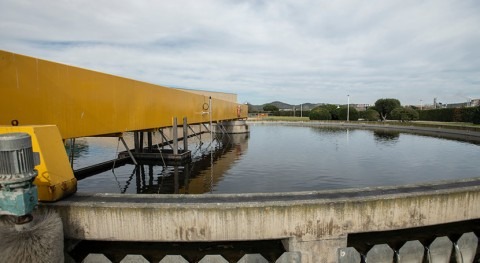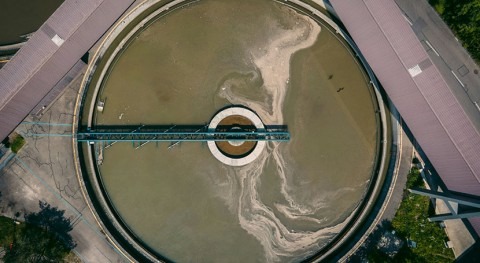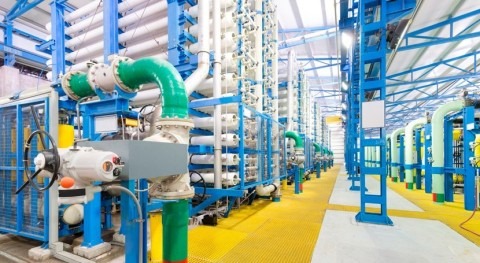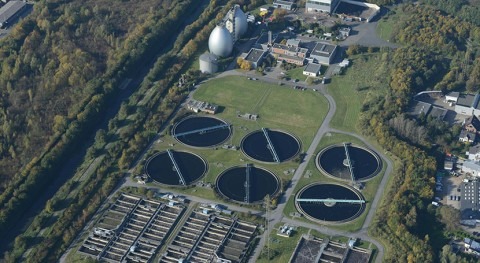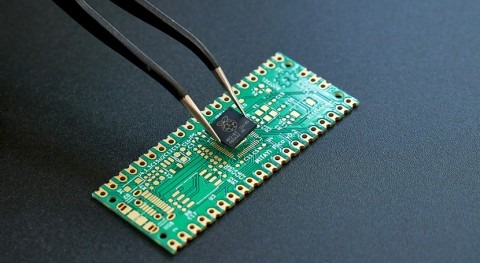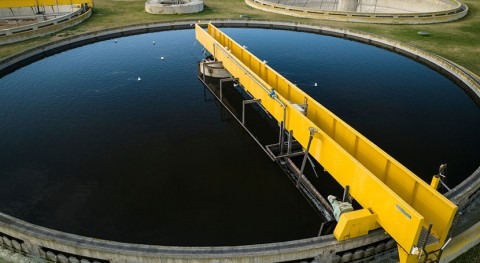Emergent challenges in freshwater availability have the potential to create economic and humanitarian catastrophes. Recent work suggests that the population facing extreme droughts could more than double by the end of this century (Nature Climate Change 2021). Water purification through membrane separations, which requires less energy per liter of water than alternative processes, is the most sustainable approach to address this crisis. To innovate at a pace that matches the urgency of the need, we need to develop material improvements from the sub-nanometer to the macroscopic, through research spanning fundamental mechanistic exploration to applied product development, and put the results into practice on scales ranging from individual system components all the way up to international water management strategies. As such, we argue that holistic membrane research pursued through academic-industrial partnerships is critically important in making clean water sustainable.
Membrane-based separations rely on a selective film that allows water to flow through while resisting the passage of salts and other contaminants. An applied pressure pushes clean water through the membrane as a “permeate” stream, while a “retentate” with a higher concentration of undesired impurities is rejected by the membrane. Much work has focused on the development of these special membrane materials, which have been increasingly important to water purification for drinking, agriculture, and industrial use over the last four decades. Over that time, membrane innovation has led to significant improvements in the ability to produce purer water using less energy.

Enrique Gómez, Professor of Chemical Engineering and Materials Science and Engineering, The Pennsylvania State University
State-of-the-art membranes for desalination, known as reverse osmosis membranes, rely on a composite structure that, while only tens to hundreds of nanometers in thickness, consists of various polymers carefully engineered in their composition and processing. Despite tremendous fundamental and applied progress over the years, the way that water traverses these membranes at the smallest length scales has remained elusive. Our recent work led to new electron microscopy techniques to measure how the density of these membranes varies at the nanoscale, computational fluid flow simulations to build a mechanistic understanding of how that variation leads to observed differences in macroscopic water flux through the membrane, and identification of a key new lever for improving membrane permeability (Science 2021). It turns out that controlling mass distribution at the nanoscale, in other words reducing “nano dead spots,” significantly enhances water transport through these materials. This discovery of a new, previously undetectable feature that can enable lower energy water permeation can be coupled with other advances in membrane chemistry to produce reverse osmosis modules that provide higher water quality and that minimize the total lifecycle environmental impact of reverse osmosis.
Holistic membrane research pursued through academic-industrial partnerships is critically important in making clean water sustainable
Key to our effort was a partnership between academic and industrial scientists. Universities have a deep expertise and knowledge-focused mission to develop and invest in cutting edge tools and push fundamental science even when an application may not be clear. Public funding from agencies like the National Science Foundation or Department of Energy enables this sort of fundamental technical development. Water purification companies understand market needs, manufacturing methods, and the translation of novel materials science into new products, but have limited incentives to invest in purely fundamental research. University-industry collaborations harness the unmatched fundamental depth and capabilities of academic researchers to the applied expertise, practicability, and market engagement at the heart of private R&D to focus discoveries in key application areas, accelerating the cycle of developing basic scientific knowledge and applying it directly to solve real-world problems and maximizing the potential for societal impact.
In the aforementioned Science article, DuPont Water Solutions drew upon decades of membrane experience to vary water purification performance of the polyamide selective layer in a series of reverse osmosis membranes, while academic partners leveraged new tools in three-dimensional (3D) electron microscopy to reveal how altering the nanoscale morphology was related to the highest performing membranes providing remarkably fast water permeation. The result is both a better fundamental understanding of how membranes work and a tool that can be used to manufacture more efficient membranes. Without our partnership, these new insights and capabilities would have remained undiscovered.

Jeffrey Wilbur, R&D Manager, RO/NF Membrane Chemistry, DuPont Water Solutions
Meeting the world’s water quantity and quality needs in a sustainable way requires innovation in materials science, manufacturing efficiency, water treatment processes, and societal water management. Reverse osmosis membranes already offer unmatched water purification efficiency, but as our recent work demonstrates, room for improvement remains. Increased selectivity against solutes is as important as improved membrane water permeability: higher selectivity results in better rejection of contaminants and purer water in the permeate stream. Advances in membrane chemical stability during periodic cleaning can be coupled with improvements in mechanical durability to improve process flexibility and reduce component replacement requirements. In parallel to the development of novel membrane technology, opportunities for meaningful improvement span potential advances in the efficiency of component manufacturing and production, improved function of the spiral-wound modules that encapsulate membranes, the overall design of reverse osmosis treatment plants, and automated data collection, analysis, and process control.
Water purification companies understand market needs, manufacturing methods, but have limited incentives to invest in fundamental research
Beyond maximizing the sustainability of desalination, membrane innovation can enable purer retentate streams suitable for use as feeds to other industrial processes rather than disposal as waste. A combination of advanced membranes along with complementary technologies can facilitate minimal liquid discharge systems, in which nearly all the water in an aqueous solution is efficiently recovered and reused as a replacement for otherwise necessary freshwater intake at a much lower energy cost than recovering the same water with thermal evaporative methods. Through coordination between water-using industries and municipalities, and incorporation of new treatment technology, an interconnected web can be spun in which municipalities, agriculture, and industry coordinate water management even across national borders to minimize freshwater needs and maximize our ability to safely and efficiently recycle water for human use.
Returning to our team’s prospects, we see a wealth of opportunities to further explore the potential of membranes and turn our discoveries into better materials. We believe there is more to gain from further characterization of desalination membranes in 3D at the nanoscale. Density appears to have a powerful effect on local water transport, but as we think about ion or neutral small molecule transport through membranes, or even more ambitiously as we look to enable efficient membrane processes for more complicated specialty separations, the spatial distribution of local chemistry throughout membranes at this length scale may be an even more important factor. Measuring this chemical heterogeneity at the necessary resolution throughout the complicated structure of polyamide membranes is a formidable challenge that we believe is worth our effort. Innovating effectively in membrane science, technology, and applications requires public investment in university research along with industrial support, collaboration, and ultimately commercialization of significant results. This type of continued partnership will be crucial to further breakthroughs in the pursuit of global clean water sustainability.







